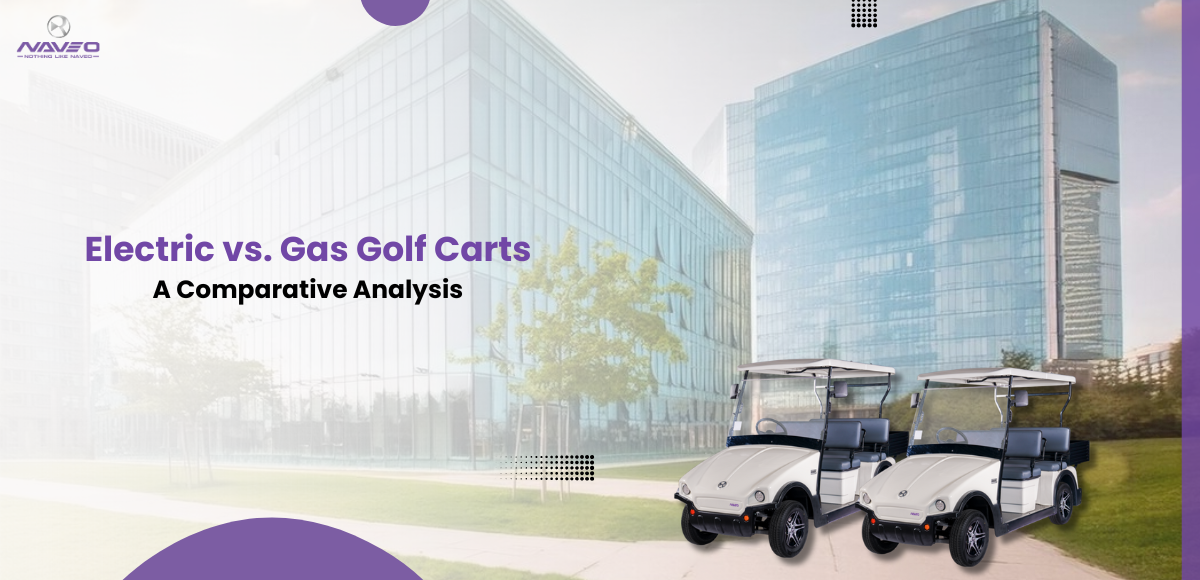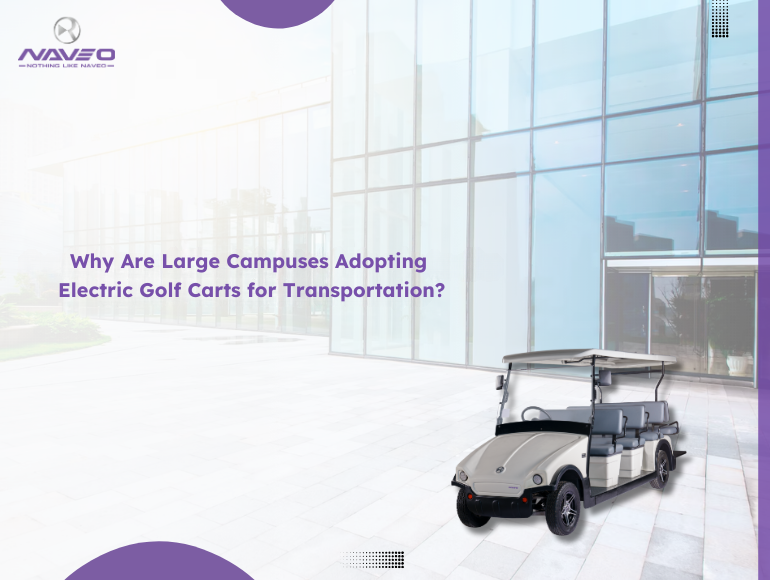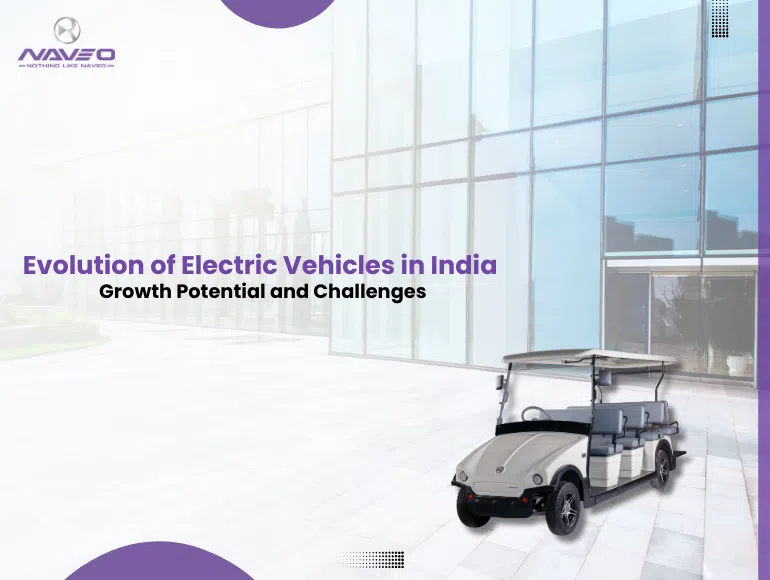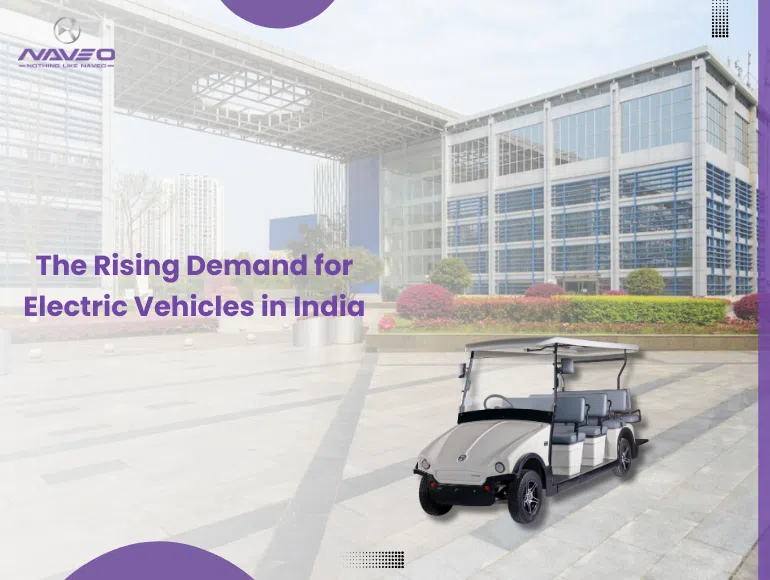Most golf courses, resorts, and even some residential areas employ golf carts. Of the many uses they provide, one of the most popular is taking people around large areas. Therefore, they tend to be very useful for both golfers and non-golfers. However, with both electric and gas golf carts on the market, choosing between them can be challenging because each has pros and cons of its own. In this blog, we will explore the significant differences between Electric and Gas Golf Carts.
What Is an Electric Golf Cart?
An electric golf cart is a means of transportation that is powered by one or more rechargeable batteries. These carts usually run either on a lead-acid or lithium-ion battery, which can be hooked up to an electric motor that drives the cart’s movement. The most prominent features of electric golf carts are that they are quiet, require less maintenance, and are eco-friendly. They usually run on golf courses, gated communities, and other places where short-distance transportation is needed.
What is a Gas-Powered Golf Cart?
On the other hand, gas-powered golf carts run using an internal combustion gasoline or diesel fuel engine. They have more power, run faster, and are better on rough terrains and longer distances. Gas-powered golf carts come in handy where more power or excellent range may be required, such as hilly golf courses, large properties, or off-road situations. They benefit from quick refueling, but they are more demanding in terms of maintenance and environmental impact.

Detailed Analysis
Power Source
Rechargeable batteries provide power to an electric motor in electric golf carts. Usually, these batteries ensure quiet and smooth riding, perfect for noise-sensitive spots like residential communities or even golf courses. Gas golf carts run using small gasoline or diesel engines, which enables them to produce more power across tougher terrain. However, they are noisier and produce emissions.
Performance
Electric buggies are quiet and efficient. The electric motor provides instant torque, hence smooth acceleration, and is easy to maneuver across flat land. On the other hand, gas golf carts run on combustion engines; therefore, they can provide more power and speed, making them better for being applied on courses that feature rougher terrain where the extra power would be needed to climb steep inclines or uneven surfaces.
Operating Costs
Generally, the Cost of running an electric buggy is cheaper than that of a gasoline power cart. The electric carts have less maintenance involved and are relatively inexpensive to charge as compared to buying gasoline. Gas-powered golf carts are more powerful; however, their operation becomes more since fuel must be purchased and the engine has to be serviced more often.
Environmental Impact
Since electric golf carts do not emit any emissions, they are less harmful to the environment; therefore, they are highly preferred by most people who want to minimize their carbon footprint. Though dominating the market, gas golf carts continue to be a source of air pollution through the emission of greenhouse gases. While new efficiency gas engines have been designed, such models remain less eco-friendly compared to their electric versions.
Electric golf carts are easier to manage, with basic maintenance only involving frequent checks on batteries and their charging. They last longer and require less maintenance because there are fewer moving parts. Gas-powered golf carts require more frequent engine checks and maintenance, such as oil changes and air filter replacements. The complexity of their engines translates to a higher predisposition to mechanical problems along the way.
Convenience
Electric buggies are very convenient with their ease of use and the fact that they are quiet, thus suitable for residential areas or noise-free places. They are also easier to maintain in that they only require day-to-day battery charging as compared to other models. Their range, however, is limited in relation to the life of the batteries before needing recharge. Gasoline carts have the advantage that they can be refueled quickly, and the distance they can travel is longer, which may be more apt for longer coverage and harder terrain.
Initial Cost and Resale Value
An electric golf cart, in general, will have a lower initial purchase price compared to a gas-powered golf cart. However, the replacement of batteries can be costly and adds to the Cost in the long term. A gas-powered golf cart is more expensive up front in purchase price; however, the resale value is higher when compared to electric carts because the gasoline engines Electric buggies are limited only by their batteries and typically allow a fure resilient. Therefore, it becomes a better investment long term, depending on the use of the vehicle. Range
ll day’s driving before needing a recharge. Thus, they are best either for short trips or daily use that is confined to one area. Gas power allows a very extensive range since it can be used for as long as they have fuel in the tanks. Therefore, they are more suitable for extended work especially in larger or rougher areas.
In short :
In short :
| Feature | Electric Golf Carts | Gas Golf Carts |
| Power Source | Battery-powered | Internal combustion engine |
| Performance | Smooth, quiet ride with instant torque | More powerful, better for rough terrain and steep inclines |
| Operating Costs | Lower, with minimal maintenance and cheaper recharging | Higher, with regular maintenance and more expensive fuel |
| Environmental Impact | Zero emissions, eco-friendly | Emits greenhouse gases, contributes to air pollution |
| Maintenance | Requires less maintenance; primarily battery care | Requires regular maintenance (oil changes, filters, etc.) |
| Convenience | Easy to operate with push-button start; quieter operation | Longer range and quick refueling but noisier |
| Initial Cost | Generally lower upfront cost | Typically higher upfront cost |
| Resale Value | Lower due to battery degradation | Higher due to engine durability |
| Range | Limited by battery capacity | Extended range with quick refueling |
Conclusion
Gas and electric golf carts do have their pros and cons of their own. Electric golf carts are perfect for those in need of quiet, environmentally friendly, and low-maintenance types of machines. On the other hand, the gas-powered golf cart is perfect for those users who would require more power and more extended range without minding added maintenance and the impact on the environment. Roots Naveo is one of the India’s leading manufacturers of Electric buggies providing the high quality buggies at affordable prices
When one has to decide between an electric and gas-powered golf cart, he needs to think of his specific needs, the surroundings that the cart will be used in, and his budget. Knowing what sets them apart will help you choose the right golf cart for your needs and preferences.




